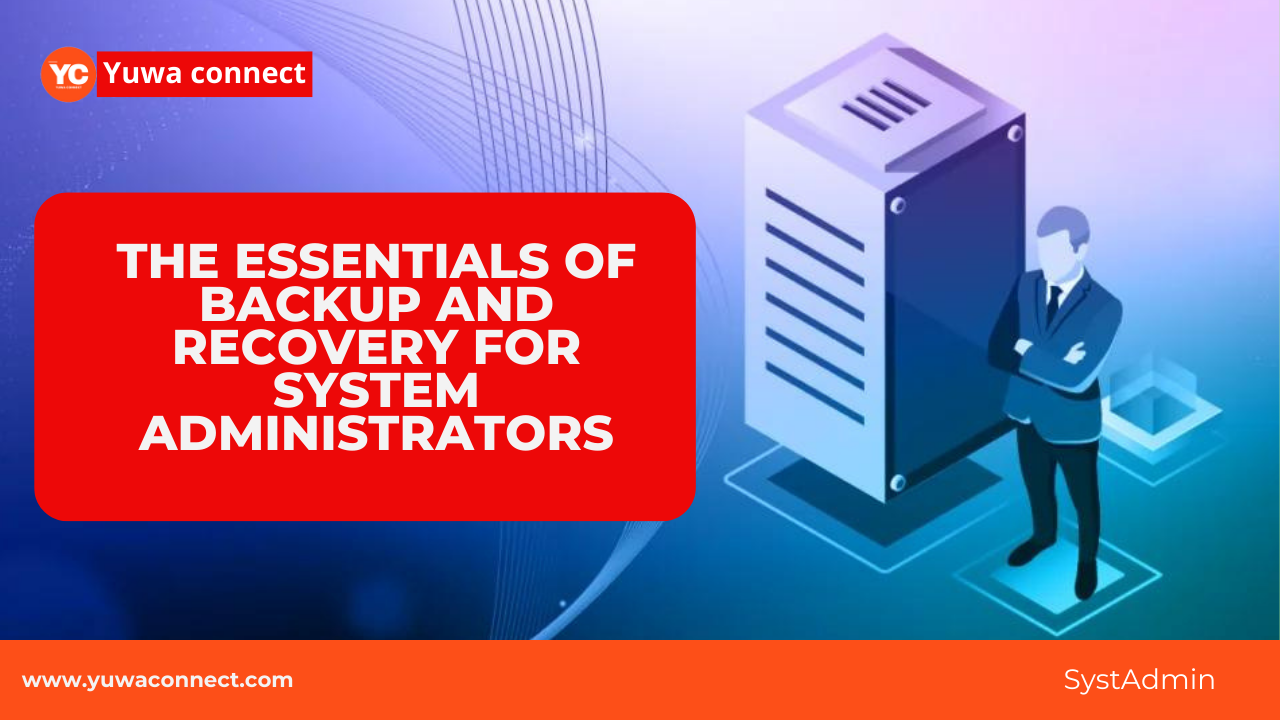In the world of IT, data is one of the most valuable assets. System administrators are tasked with ensuring that this data is protected and can be recovered in the event of hardware failure, cyberattacks, or human error. A robust backup and recovery strategy is essential for minimizing downtime and data loss. In this article, we’ll explore the key concepts and best practices that system administrators should follow to implement effective backup and recovery solutions.
Understanding Backup and Recovery
Backup refers to the process of creating copies of data that can be used to restore the original in case of data loss. Recovery is the process of retrieving and restoring that data from backups after an incident. Together, these processes form the backbone of disaster recovery strategies, ensuring business continuity and data integrity.
Types of Backups
- Full Backup:
- A full backup is a complete copy of all data, which provides the most comprehensive protection. However, full backups can be time-consuming and require significant storage space.
- Best practice: Schedule full backups less frequently, such as weekly or monthly, to balance between data protection and resource consumption.
- Incremental Backup:
- Incremental backups only save changes made since the last backup, whether it was a full or incremental backup. This approach is faster and requires less storage but can complicate recovery because multiple backups may need to be restored in sequence.
- Best practice: Use incremental backups for daily or even hourly backups to ensure that changes are captured without the overhead of full backups.
- Differential Backup:
- Differential backups store changes made since the last full backup, rather than since the last backup of any type. This method simplifies recovery compared to incremental backups, as only the last full backup and the latest differential backup are needed.
- Best practice: Combine differential backups with a regular schedule of full backups to streamline the recovery process.
Backup Storage Options
- On-Premises Storage:
- Storing backups on local storage devices, such as NAS (Network-Attached Storage) or external drives, provides fast access and control over data. However, this approach is vulnerable to physical disasters, such as fires or floods.
- Best practice: Use on-premises storage as part of a hybrid strategy, combining it with off-site or cloud backups to mitigate risks.
- Off-Site Storage:
- Off-site storage involves keeping backups in a remote location, such as a secondary data center or a secure storage facility. This reduces the risk of data loss due to localized incidents.
- Best practice: Regularly rotate off-site backups and ensure that they are updated in line with on-premises backups.
- Cloud Storage:
- Cloud backups offer scalability, accessibility, and cost-effectiveness. Many cloud providers offer automated backup services with redundancy, ensuring data is available even if one data center fails.
- Best practice: Leverage cloud storage for critical data and ensure that encryption and security measures are in place to protect sensitive information.
Best Practices for Backup and Recovery
Critical Aspects of Backup and Recovery for System Administrators
- Regularly Test Backups:
- It’s not enough to create backups—you must also regularly test them to ensure they can be successfully restored. Testing helps identify any issues with backup integrity, storage media, or recovery procedures.
- Best practice: Schedule regular recovery drills to validate your backup and recovery processes, and make adjustments as needed.
- Implement a 3-2-1 Backup Strategy:
- The 3-2-1 strategy is a widely recommended approach: keep three copies of your data, store two on different media types, and store one off-site. This ensures that data is protected against a wide range of risks.
- Best practice: Adapt the 3-2-1 strategy to your specific environment, incorporating cloud storage as one of the media types for additional flexibility.
- Automate Backups:
- Manual backups are prone to errors and inconsistencies. Automating the backup process ensures that backups occur regularly and reliably without requiring constant oversight.
- Best practice: Use automation tools to schedule and manage backups, monitor their success, and alert administrators to any issues.
- Document and Update Recovery Procedures:
- Clear, well-documented recovery procedures are essential for ensuring that backups can be restored quickly and accurately in an emergency. Regularly update these procedures to reflect changes in your IT environment.
- Best practice: Maintain a recovery plan that includes contact information, step-by-step instructions, and a list of necessary tools and credentials.
- Prioritize Critical Data:
- Not all data is equally important. Identify and prioritize the most critical data for more frequent backups and faster recovery times. This ensures that essential services and operations can be restored quickly.
- Best practice: Categorize data based on its importance and apply appropriate backup schedules and retention policies.
Conclusion
Backup and recovery are fundamental components of system administration, safeguarding data against loss and ensuring business continuity. By understanding the different types of backups, selecting the appropriate storage options, and following best practices, system administrators can create a robust backup and recovery strategy that minimizes risks and ensures that data can be quickly restored when needed. Regular testing, automation, and documentation are key to maintaining an effective backup system, allowing organizations to recover from incidents with minimal disruption.


